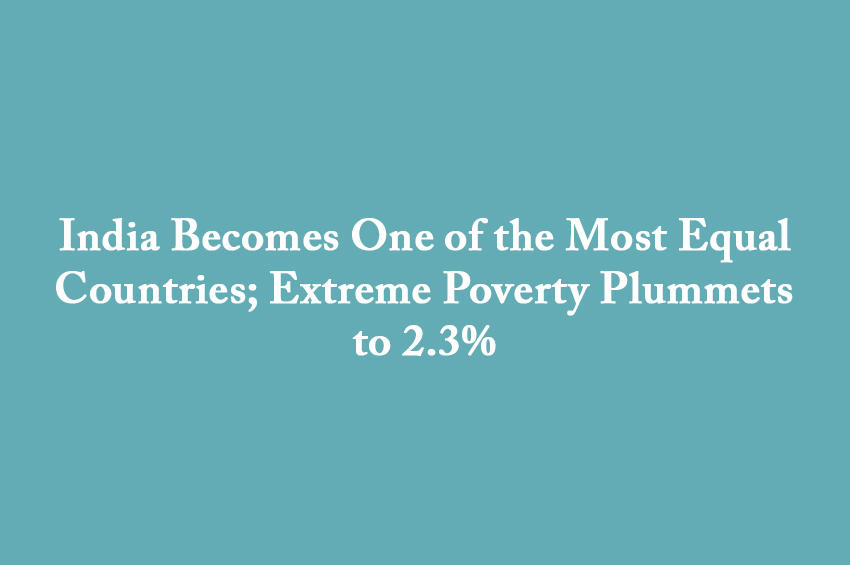Winning Bizness Economic Desk
Mumbai According to the latest World Bank update, India ranks fourth globally in income equality, with a Gini coefficient of 25.5—behind only the Slovak Republic, Slovenia, and Belarus. This positions India ahead of major economies such as China and the United States.
How the Gini Index Works
The Gini Index measures how evenly income is distributed, on a scale from 0 (perfect equality) to 100 (complete inequality). India’s current score places it in the “moderately low inequality” bracket, improving from 28.8 in 2011–12.
Massive Drop in Extreme Poverty
Between 2011–12 and 2022–23, approximately 171 million people excited extreme poverty. The proportion of Indians living on less than \$2.15 a day fell sharply from 16.2% to just 2.3%.
Rural and Urban Gains
Rural poverty declined from 18.4% to 2.8%, while urban poverty dropped from 10.7% to 1.1%, significantly narrowing the rural–urban disparity.
Key Drivers: Welfare and Inclusion
The report credits inclusive government programmes:
- Over 55 crore Jan Dhan bank accounts opened
- 142 crore Aadhaar IDs issued and ₹3.48 lakh crore in savings via direct transfers
- Ayushman Bharat health insurance (₹5 lakh coverage; 41+ crore families)
- Free food grains under PMGKAY for 80 crore people
- Entrepreneurship support via Stand-Up India and PM Vishwakarma schemes.
Rising Household Debt Poses Concerns
Meanwhile, household debt per person rose from ₹3.9 lakh in March 2023 to ₹4.8 lakh by March 2025. Housing and non-housing loans have fuelled this rise. Loan-to-value ratios over 70% are increasing, prompting warnings that such debt trends require close monitoring.
In a Nutshell:
- India is the 4th most equal country globally, Gini score: 25.5
- Gini index dropped from 28.8 (2011–12) to 25.5 (2022–23)
- Extreme poverty rate fell from 16.2% to 2.3%
- Around 171 million people lifted out of extreme poverty
- Rural poverty rate: 18.4% → 2.8%; Urban: 10.7% → 1.1%
- Key government schemes: financial inclusion, health coverage, food security, entrepreneurship
- Per capita household debt rose 23%, from ₹3.9 lakh to ₹4.8 lakh


